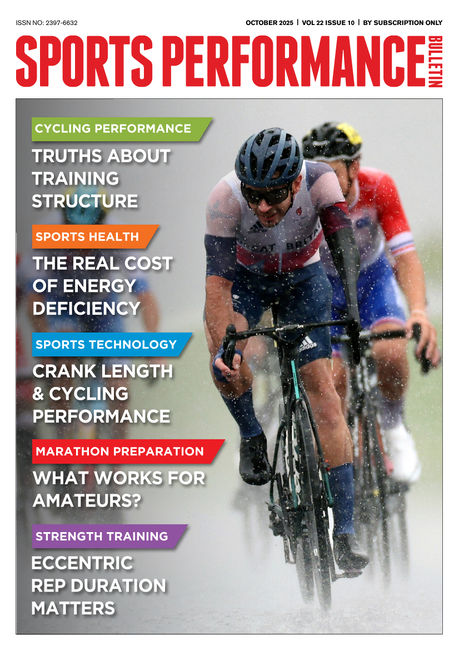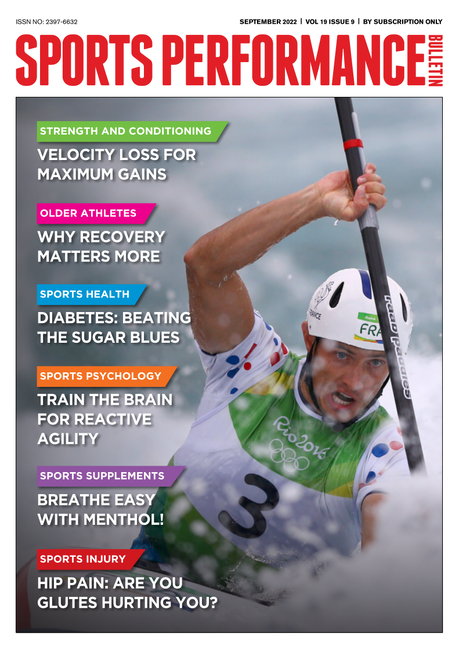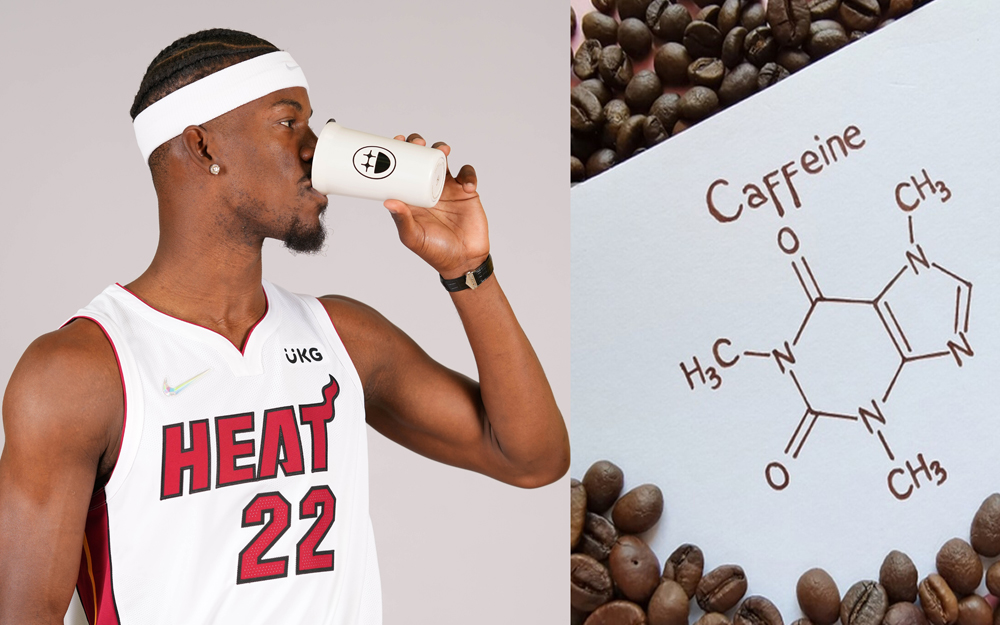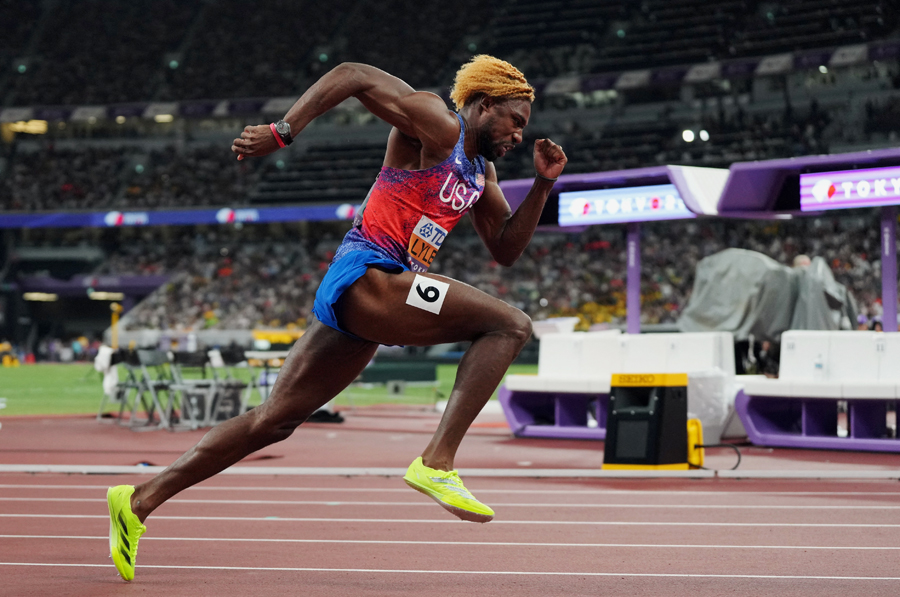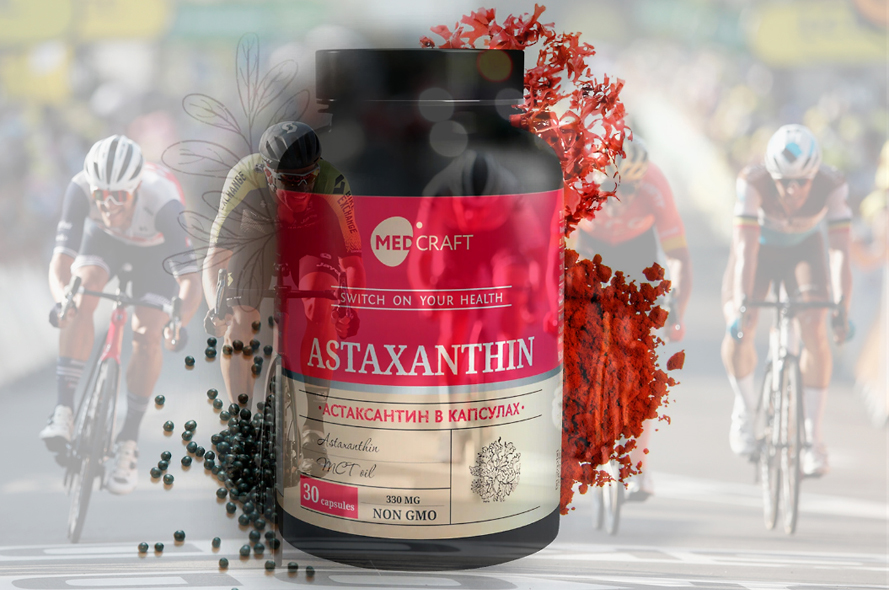You are viewing 1 of your 1 free articles. For unlimited access take a risk-free trial
Adaptogens
What exactly are 'adaptogens' and can they really help your performances
How did the former Soviet Union achieve such phenomenal success in international athletic competition? Good coaching, a large pool of highly motivated athletes, and an excellent long-term physical and financial support system for athletes were undoubtedly important factors. Critics of the Soviet system have also contended that the use of performance-enhancing anabolic steroids and the employment of ethically shaky strategies such as blood doping also helped Soviet athletes dominate the rest of the world.(1) An adaptogen is protective. It should raise an individual's resistance to physical, chemical, or biological stresses.
(2) An adaptogen boosts recovery:. It has the power to normalize the physiological functioning of organisms suffering from various physical problems. (3) Although powerful, an adaptogen must be harmless (non-toxic) to the individual ingesting it, disturbing natural bodily functions as little as possible.
Note that if adaptogens are really harmless, protective and recovery-enhancing, it's clear that they should be able to improve athletic performance. By keeping athletes from getting ill and by preventing them from being wiped out by heavy training (point I ) and by augmenting recovery so that intense workouts could be carried out more frequently (point 2), adaptogens might improve athletes' overall training programmes and therefore quicken race times.
Eleutherococcus senticosus
Perhaps the plant which has been most often used as an adaptogen is a thorny bush from the Middle Amur region of northern Siberia in the former Soviet Union known as Eleutherococcus senticosus, which for convenience we'll simply call ES (despite what your local health-food shop may tell you, ES is NOT the same as ginseng, although both plants come from the same botanical family. Unfortunately, ES is sometimes referred to as Siberian ginseng, even though ES and true ginseng, Panax ginseng, have quite different effects in the body). The performance- boosting potential of ES was first described by Brekhman in the 1950s; the Russian researcher claimed that ES extracts could enhance stamina and performance. In one research study carried out by Brekhman, runners who ingested ES 'adapted' to the 10K so well that they chopped five minutes from their 10-K times, while a placebo group was unable to improve. The overall study group consisted of non- elite runners who averaged about 50 minutes for a 10K. In addition to faster race performances, the runners also upgraded their reaction times and mental concentration after taking ES. Several other Russian studies also supported the use of ES. For example, Professor A. V. Korobkhov at the famed Lesgraft Institute of Physical Culture and Sports in Moscow, in an investigation carried out with 1500 athletes, found that ES increased stamina and endurance, improved reflexes and coordination, and expanded the amount of training which athletes could tolerate without harm, especially in long- distance events. Of special interest were the observations reported by the 30 Olympic sprinters, decathletes, and marathoners in this study; they almost universally reported increased endurance and an enhanced willingness to repeat tough workouts soon after they were completed.
In yet a third study, ES extracts were given to cyclists over a 1 2-day period as they participated in competitive races. ES-athletes won the majority of the competitions, and ES-ingesters reported an unusually rapid recovery of strength after races and a strong sensation of heightened muscle vigour. Several other Russian investigations have also suggested that ES can enhance performance.
These pesky Russkies
Are you thinking that Eleutherococcus senticosus supplements might be beneficial? Well, hold on for a little while, because there are problems with all of the Russian studies. For one thing, ES athletes in the Russian research usually KNEW they were taking something which might enhance performance; therefore, they might have benefited from the well- known 'placebo effect'. Also, the scientists themselves had knowledge (at the time of testing and during data analysis) of which athletes had swallowed ES and therefore might have been tempted to fudge the numbers a bit to make the studies look good to the bureaucrats 'upstairs'.
The placebo-effect criticism can be counter- attacked, however, by looking at the Russian research with mice. Mice studies are nice because mice usually don't know what they're ingesting, and some of the small-rodent research is quite convincing. In one study, mice eating ES leaves hiked their endurance capacity (while running up an endlessly moving rope) by 44 per cent, and mice ingesting ES roots bolstered performance by 70 per cent, compared to mice with no ES in their feeding trays. These gains became greater as ES ingestion continued over longer and longer periods of time.
However, there were additional problems with the Russian research into ES use in humans. Some of the Russian studies lacked control groups, and those pieces of research which did feature controls failed to incorporate a 'cross-over' design, in which ES- free athletes would have been tested with ES while ES performers would have competed without the precious shrub. Another big problem was that there was no exact chemical definition of what the athletes were being given. We know only that the individuals ingested ES; as to which part of the E. senticosus plant was used and how the extract was actually prepared, we're in the dark. Even if the Russian ES extract did work, a different preparation of ES might not work, because active ingredients might inadvertently be left out.
The ES mechanism
Assuming for a moment that the Russian results are correct and that ES can raise performance, what is ES's actual mode of action, ie, what does it really do inside the body? Based on various pieces of research, it's very likely that ES enhances muscle-glycogen resynthesis after exercise. If this is true, it would explain why athletes have reported quicker recoveries while using ES supplements. By raising muscle carbohydrate concentrations very quickly, the plant extract would make it easier for athletes to perform several hard workouts within a relatively short time frame.
Research has also indicated that ES might raise muscle creatine phosphate (CP) levels. Heightened CP has been linked with better interval workouts and an increased ability to sustain high-intensity exercise over short periods of time. Therefore, ES might work somewhat like creatine monohydrate, another currently 'hot' nutritional supplement.
The literature also suggests that ES can have a stress-lowering effect. Various studies show that ES reduces stress in laboratory animals, and that the active ingredients in ES are taken up by both the liver and adrenal glands. In the adrenals, ES seems to moderate the production of cortisol, a key stress hormone. This may represent the key reason why ES is associated with protein-building and recovery, since cortisol is a potent 'catabolic' (protein destroying) hormone. In addition, high levels of cortisol are often seen in overtrained athletes, suggesting that ES might modulate the risk or magnitude of overtraining.
All of this information suggests that there is a reasonable explanation for how ES might be beneficial. By promoting more rapid glycogen and CP restoration, the extract could enable athletes to avoid the burn-out associated with glycogen depletion, and permit them to fit more high-quality workouts into a defined period of time. The enhanced protein metabolism associated with ES might also boost recovery and lead to greater gains in muscle strength. However, it's important to point out that all of the metabolic effects of ES are not completely understood; the extract could be participating in a variety of other chemical reactions inside muscle cells.
The problem of analysis
If you're now thinking about heading straight to your health-food shop to stock up on E. senticosus, bear in mind that it's very difficult to know if a particular firm's ES extract is of high quality. The quality of an ES product depends on several factors, including the location of the ES plants and the season of harvest, the age of the overall plant and the age of the roots, the extraction solvent used to obtain the (hopefully) active ingredients, the temperature of extraction, and the particular quality-control methods used in ES root and extract processing. We do know that ES extracts are a complex mixture of over 43 (!) active and inactive compounds, the most important of which are probably Eleutheroside B (.5%), Eleutheroside E (.1%), and quite possibly the polysaccharides PES A and B.
Eleutheroside B has been linked with improved protein synthesis, decreased stress, and delayed fatigue in various studies, and Eleutheroside E has also been correlated with lower stress and fatigue. Eleutherosides B and E are present in relatively large quantities compared to the other compounds in an ES mixture, and they stand out readily when ES is chemically analysed, so their presence in ES mixtures has been used by analytical chemists around the world to standardise the quality of ES extracts.
This search for Eleutheroside B has led to some interesting findings. The compound can be found readily in ES extracts coming from Russia and South Korea, for example, but it appears to be absent in extracts emerging from the People's Republic of China. It's not known for sure if this means that Chinese ES would be less effective. At the present time, the only way to objectively determine ES- extract quality - in spite of claims from the various firms which hope to sell the product to you - is by means of a complicated analytical technique called High Performance Liquid Chromatography (HPLC). Unfortunately, when you step into your ES merchant's shop, you probably won't know the Eleutheroside B and E content of the product he is trying to sell you, or even whether the preparation has ever been analyzed by HPLC for quality. Let' s face it; if you gulp down some ES, you'll probably be swallowing a product of unknown composition.
In spite of all these potential problems, the Russian scientist Brekhman was so confident of the efficacy of ES that he furnished the Soviet Olympic teams and internationally elite athletes with ES extracts on a consistent basis. However, until the collapse of the Soviet Union in 1989, athletes and coaches in the West were almost completely unaware of ES. Soviet sports authorities and athletes have now admitted that they did not want to reveal information about ES to the outside world, especially since a great deal of scientific effort had gone into the extract - and since the Russians believed that ES could indeed enhance performance.
From top athletes to chess players
It was clear that the political leadership of the USSR believed in the efficacy of ES. However, they reserved ES extracts not for the people doing the back-breaking work of building bridges and roads or toiling away in factories but for the 'elite' representatives of their society. In addition to international athletes, Russian Olympic coaches, ballet dancers, high-level government officials, cosmonauts, chess players, musicians, KGB agents, anti-guerilla military personnel, and high-level Soviet military officers all became faithful ES users, while the 'man in the street' had to stumble along with vodka and vegetables. Beginning with the 1972 Olympics in Munich, Soviet athletes began cautiously telling outsiders about the benefits of ES and other adaptogens, but - with the exception of a few inquisitive investigators in the West and a handful of sceptical Western athletes - very few people knew about ES and its potential benefits.
After the Soviet Union's collapse, Russian research on ES diminished a bit, and Western scientists didn't exactly fall all over themselves trying to pick up the ES ball. However, indirect evidence for the value of ES continues to this day. In 1994, for example, Russian athletes using adaptogens during their training outperformed all expectations and took home 11 gold medals from the 1994 Winter Olympics in Lillehammer, Norway.
Dr. Sergei Portugalov, chief advisor in nutrition and pharmacology to the Russian Olympic teams and also Head of the Laboratory of Biologically Active Substances, National Research Institute of Sport in Moscow, and a member of the World Anti-Doping Conference, recently said: 'Sports have always been a major priority in Russia, and finally the world will know what has helped us achieve domination. Hundreds of researchers have worked secretly to improve our athletes' nutritional practices, which we consider to be of fundamental importance for the success of our athletes. For the past 10 years, we have primarily focussed on achieving results without using
drugs. Our greatest competitive advantage has come from performance supplements derived from natural plant materials. The nutritional supports provided by these supplements helped our athletes achieve better performance, stamina, endurance, strength, recovery, resistance to infection, muscle development, and adaptation to changes in climate, time zones, and altitude'.
Fortunately, research also suggests that there are few toxic side-effects associated with ES use. In fact, ES extract appears to be about 10 times less toxic than aspirin, a commonly used anti-inflammatory. However, although Dr. Portugalov endorses ES quite strongly, a conservative, Western, scientifically minded person would have to admit that the jury's still out on ES use for athletes. Although some of the Russian research is fairly convincing, it would be nice to see the benefits of ES verified in a good, double-blind study with a cross-over design. Also, there's currently no way to escape one big problem associated with ES: when you buy ES extract, you don't know exactly what you're getting!
Newsletter Sign Up
Testimonials
Dr. Alexandra Fandetti-Robin, Back & Body Chiropractic
Elspeth Cowell MSCh DpodM SRCh HCPC reg
William Hunter, Nuffield Health
Newsletter Sign Up
Coaches Testimonials
Dr. Alexandra Fandetti-Robin, Back & Body Chiropractic
Elspeth Cowell MSCh DpodM SRCh HCPC reg
William Hunter, Nuffield Health
Keep up with latest sports science research and apply it to maximize performance
Today you have the chance to join a group of athletes, and sports coaches/trainers who all have something special in common...
They use the latest research to improve performance for themselves and their clients - both athletes and sports teams - with help from global specialists in the fields of sports science, sports medicine and sports psychology.
They do this by reading Sports Performance Bulletin, an easy-to-digest but serious-minded journal dedicated to high performance sports. SPB offers a wealth of information and insight into the latest research, in an easily-accessible and understood format, along with a wealth of practical recommendations.
*includes 3 coaching manuals
Get Inspired
All the latest techniques and approaches
Sports Performance Bulletin helps dedicated endurance athletes improve their performance. Sense-checking the latest sports science research, and sourcing evidence and case studies to support findings, Sports Performance Bulletin turns proven insights into easily digestible practical advice. Supporting athletes, coaches and professionals who wish to ensure their guidance and programmes are kept right up to date and based on credible science.


